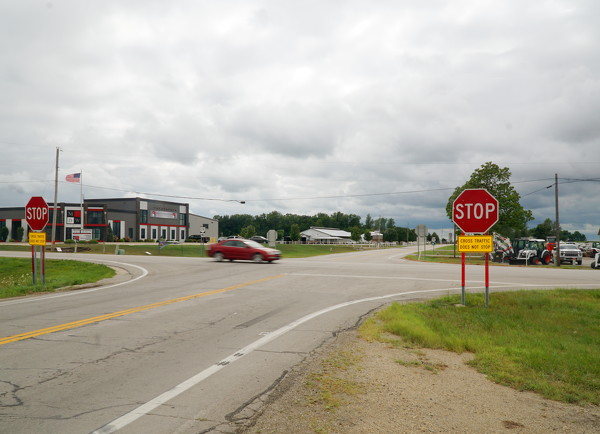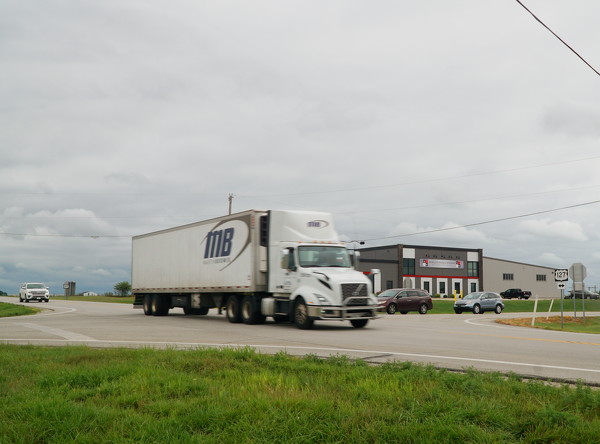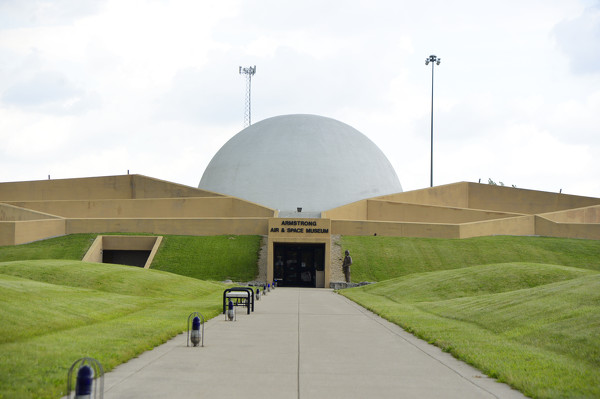
One of the most dangerous intersections in Mercer County, that of U.S. 127 and State Route 119, has been targeted for a roundabout.
CELINA - Mercer County in a few years will have its first roundabout at the intersection of U.S. 127 and State Route 119, the site of numerous fatal accidents over the years.
Since 2012, 37 crashes have occurred at the intersection, with 54% resulting in fatalities or injuries, according to Matt Bruning, Ohio Department of Transportation's statewide press secretary. ODOT regards it as its top priority for safety improvement in the county, he added.
The state aims to reduce accidents by constructing a roundabout, a circular intersection without traffic signals or stop signs that allows for a relatively constant flow of traffic.
"A roundabout is a proven solution for reducing serious injury and deadly crashes," Bruning told The Daily Standard. "They are more efficient movers of traffic and ultimately cost less than signalizing most intersections in the long run due to less maintenance and operating costs."
Ohio Gov. Mike DeWine on Monday announced $61 million in funding has been approved for 27 traffic safety projects through the ODOT's Highway Safety Improvement Program, according to a news release from DeWine's office.
The Mercer County roundabout is estimated at $3.036 million. Specifically, it will be bankrolled with state motor fuel tax revenue, Bruning said.
Safety projects were selected by a state committee of ODOT staff members with backgrounds in funding, program management, safety analysis, traffic operations, roadway design and highway management, the release states.
"The reason why they chose a roundabout there is that there has been a history of some pretty serious crashes at that location, and we know that roundabouts are a proven measure for reducing the risk of a very serious injury or fatal crash," Bruning said.
Daily, an average of 4,000 to 5,000 vehicles use U.S. 127 and 2,000 to 3,000 vehicles use State Route 119, Bruning said.
"One of the things we noticed in our study was that drivers on (State Route) 119 get impatient and pull out in front of traffic on U.S. 127. There are also no left turn lanes on U.S. 127," he pointed out.

Since 2012, 37 crashes have occurred at the intersection of U.S. Route 127 and State Route 119.
Construction of the roundabout is slated for fiscal year 2027, which begins July 1, 2026, according to Bruning. Most roundabouts are completed in a single construction season, he said.
ODOT will bid out and oversee roundabout construction. Roundabouts sometimes necessitate the acquisition of right-of-ways, though Bruning said he's not sure if that's the case with the Mercer County project.
Plans call for the construction of a single-lane roundabout on U.S. 127 at State Route 119, a proven safety countermeasure to reduce speed and prevent severe crashes, a project description reads. Roundabouts have eight potential conflict points while traditional intersections have 32 conflict points, according to ODOT.
In fact, roundabouts reduce crashes by more than 48% and serious injury and deadly crashes by nearly 80% in comparison to traffic-signal intersections, ODOT asserts.
"Roundabouts are meant to slow traffic down, so if you are involved in a crash, it's usually a fender bender that people walk away from," Bruning said. "The main goal is the safety aspect."
Bruning added that roundabouts more efficiently move traffic and many times end up costing less than traffic signals.
Mercer County experiences a high volume of heavy farming machinery and semitrailer traffic. Bruning said roundabouts are designed to accommodate such vehicles.
Roundabouts feature truck aprons, an area, usually concrete, between the central island and the traveled way that is mountable by larger vehicles but not used by passenger vehicles, according to ODOT.
"We intend for them to drive up on that to help navigate through the roundabout," Bruning said. "They can absolutely handle the larger traffic. They're engineered for that. We certainly have that in mind with that being … a high agricultural area."
When the first roundabout is about to be introduced in an area, residents often voice concerns that it won't work out. However, Bruning is confident the roundabout will end up being successful in Mercer County as it has elsewhere.
"People will initially say, 'These are going to cause more crashes, people here can't handle them, people here don't know how to use them,' and after about a year or two, the crashes go down dramatically and people say, 'Huh, that wasn't so bad,' and then a couple years later people say, 'Can we get more of those?'" Bruning said.
Mercer County Engineer Jim Wiechart noted his office is not directly involved in the project but said he believes a roundabout could potentially enhance safety at the intersection, "a pretty high accident location."
"I think that's something that engineers would consider to try to lessen the amount of accidents that are down there," Wiechart told The Daily Standard, adding he hasn't specifically looked at the intersection because it's not a county or township road. "They reduce speeds, and then they also reduce conflict points at an intersection."
He also pointed out the importance of factoring into the roundabout design the area' heavy farm machinery and semitrailer traffic.
So, is Mercer County ready for its first roundabout?
"I think like anywhere else, something that is new, something that is different, something that's a change can take some time for folks to adjust to it," Wiechart said. "A lot of the ones I've seen both in Allen County and the Columbus area, for the most part, I think they're doing what they're planned to do."
Undoubtedly, there will be a bit of a learning curve for drivers, Wiechart said. He offered a piece of advice.
"It's a simple thing, but it's important - you need to yield to the left," he said. "If provided you follow that rule, generally you're going to be OK driving through that roundabout."

